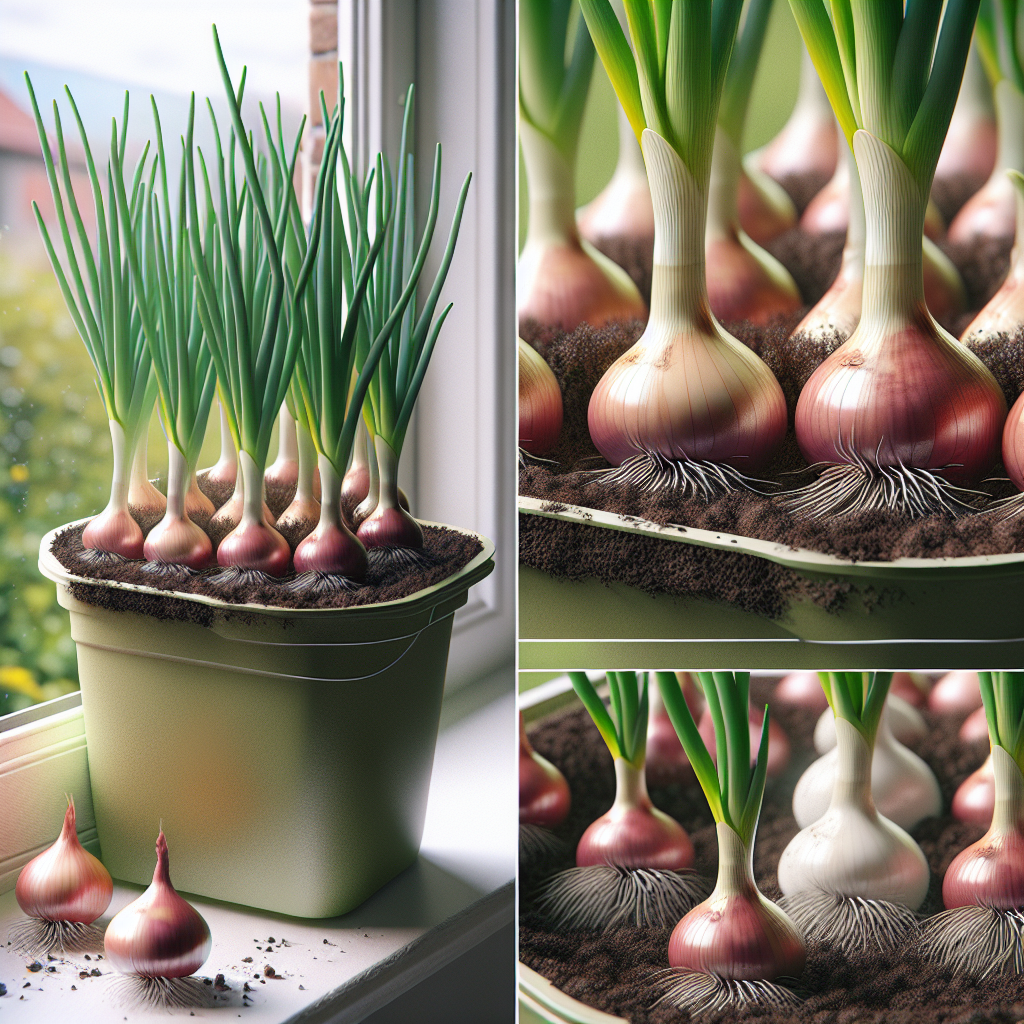Growing onions in containers is a fantastic space-saving gardening idea that allows you to enjoy fresh, flavorful onions even if you have limited outdoor space. By utilizing containers, you can grow onions on balconies, patios, or even small windowsills. In this article, we will explore the steps and tips for successfully growing onions in containers.
1. Choosing the Right Container:
When it comes to selecting a container for growing onions, there are a few factors to consider. Ensure that the container has good drainage to prevent waterlogging and root rot. A depth of at least 6 inches is ideal for onion growth. Additionally, the container should have enough room to accommodate multiple onion sets or seedlings.
2. Selecting Onion Varieties:
Onions come in various sizes and flavors. Some popular choices for container gardening include scallions (green onions), bunching onions, and shallots as they don’t require ample space. It’s crucial to choose varieties that are suitable for container gardening to ensure successful growth.
3. Soil Preparation:
Onions thrive in well-draining soil with good fertility. Prepare a potting mix by combining equal parts of compost, perlite (or sand), and peat moss (or coconut coir). This mixture provides a light and loose texture that promotes healthy root development.
4. Planting Onion Sets or Seedlings:
For convenient cultivation of onions in containers, it’s recommended to start with onion sets or seedlings rather than seeds. Onion sets are small bulbs ready for planting while seedlings are young plants grown from seeds by garden centers or nurseries.
To plant onion sets or seedlings:
– Create furrows in the soil about 2-3 inches apart.
– Place the onion sets or seedlings gently into the furrows.
– Cover them with soil, ensuring that only the tops of the bulbs remain visible.
– Space each onion set or seedling according to package instructions or around 4-6 inches apart.
5. Watering and Fertilizing:
Onions require regular watering to keep the soil consistently moist but not overly saturated. Containers tend to dry out faster than in-ground gardens, so be mindful of adequate irrigation. As a general rule, water the container when the top inch of soil feels dry to the touch.
Fertilize your onion plants every 2-3 weeks with a balanced liquid fertilizer. Alternatively, you can mix slow-release granular fertilizer into the potting mix during planting for continuous nutrient supply.
6. Sunlight and Temperature:
Onions thrive in full sun, so place your containers in an area that receives at least 6-8 hours of direct sunlight daily. Moderate temperatures between 60-75°F (15-24°C) are ideal for onion growth. However, most varieties can tolerate a wide range of temperatures, making them suitable for various climates.
7. Managing Pests and Diseases:
While onions are generally low-maintenance, they can still be vulnerable to pests and diseases such as onion flies, thrips, or fusarium basal rot. Regularly inspect your plants for any signs of infestation or deterioration and promptly take action using organic pest control methods if necessary.
8. Harvesting Onions:
The time it takes for onions to mature varies depending on the variety chosen. Generally, green onions can be harvested within a month or two after planting, while larger bulb onions may take several months.
To harvest green onions:
– Gently pull them out of the soil when they reach about 6-8 inches tall.
– Trim away any damaged or yellow foliage.
To harvest bulb onions:
– Allow the tops to naturally turn yellow and fall over.
– Carefully dig up each onion with a fork when about two-thirds of the tops have dried out.
– Leave harvested bulbs in a cool, dry place with good airflow for a few weeks to cure before storing.
In conclusion, growing onions in containers is a practical and space-saving gardening idea. With the right container, suitable onion varieties, well-draining soil, adequate sunlight, and consistent care, anyone can enjoy a bountiful harvest of fresh onions. Whether you have a small balcony or limited outdoor space, this container gardening method allows you to savor the flavor of homegrown onions with ease.













